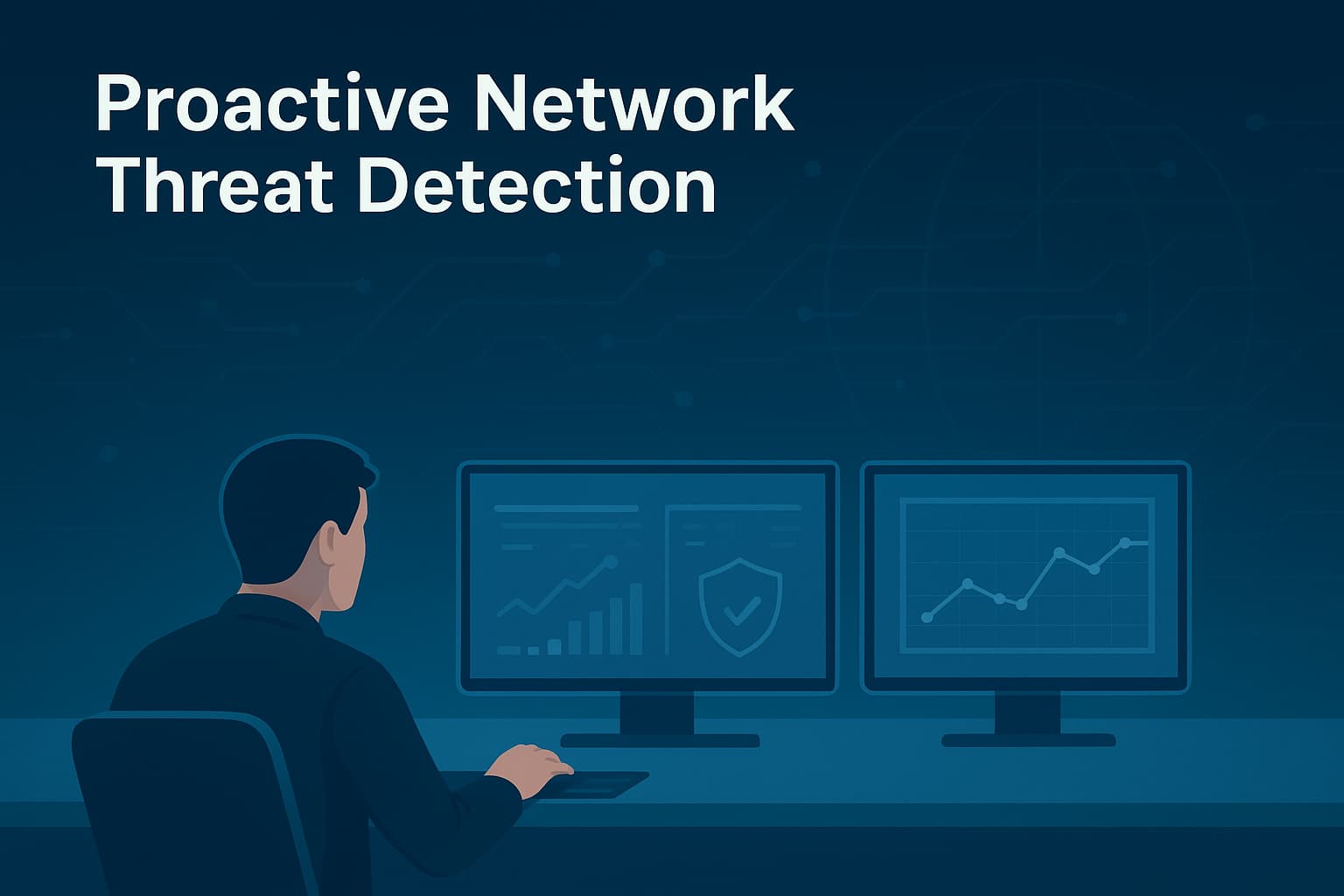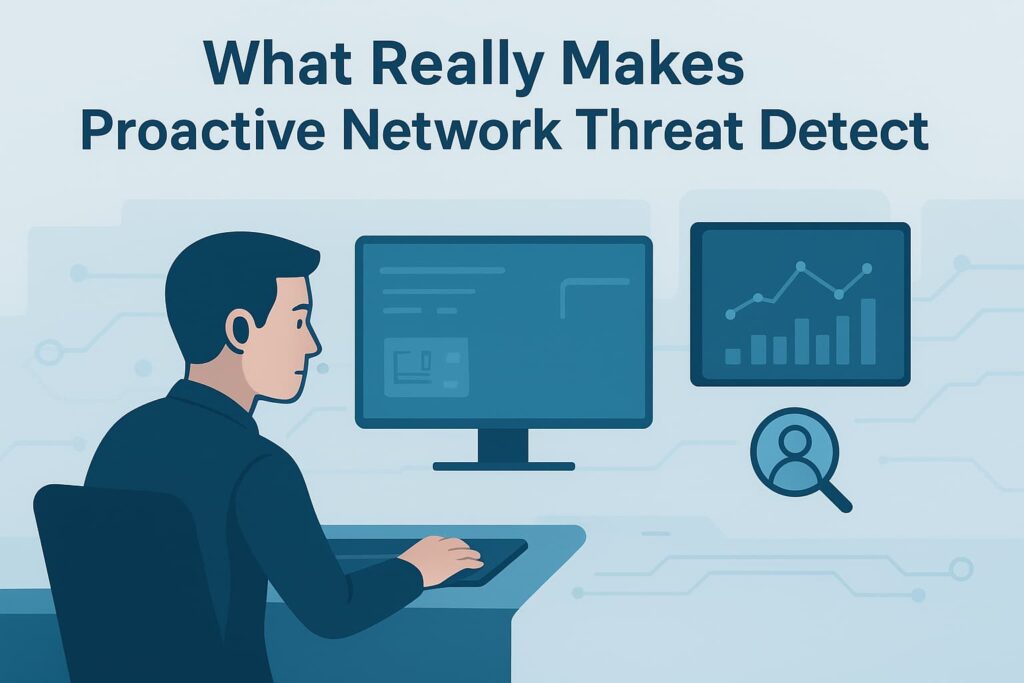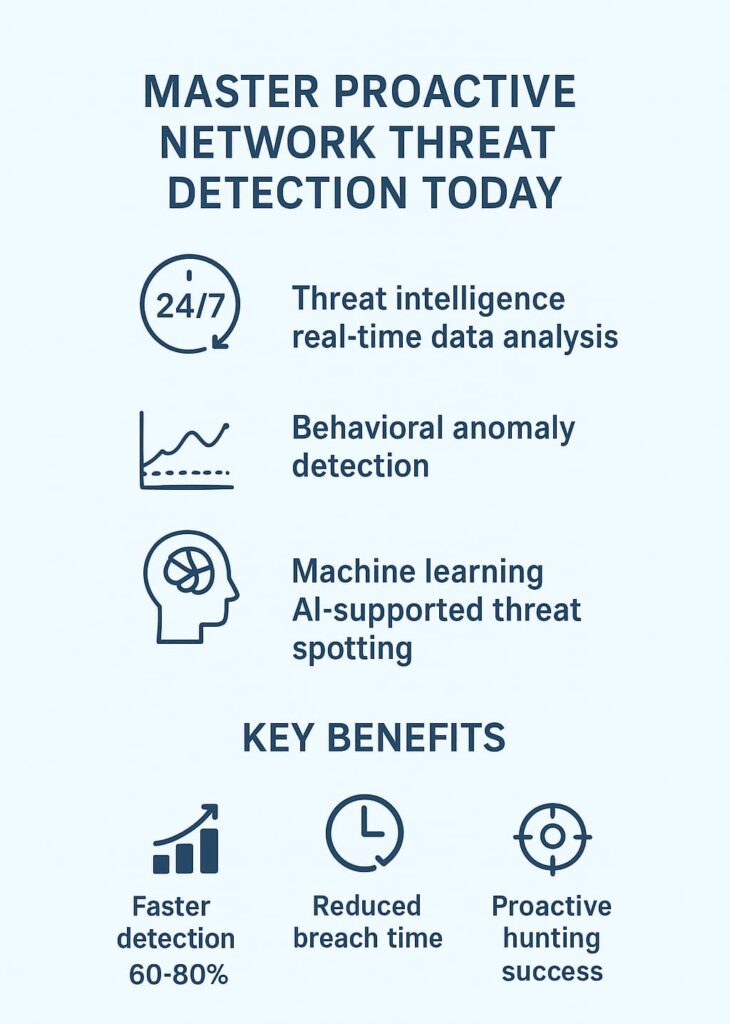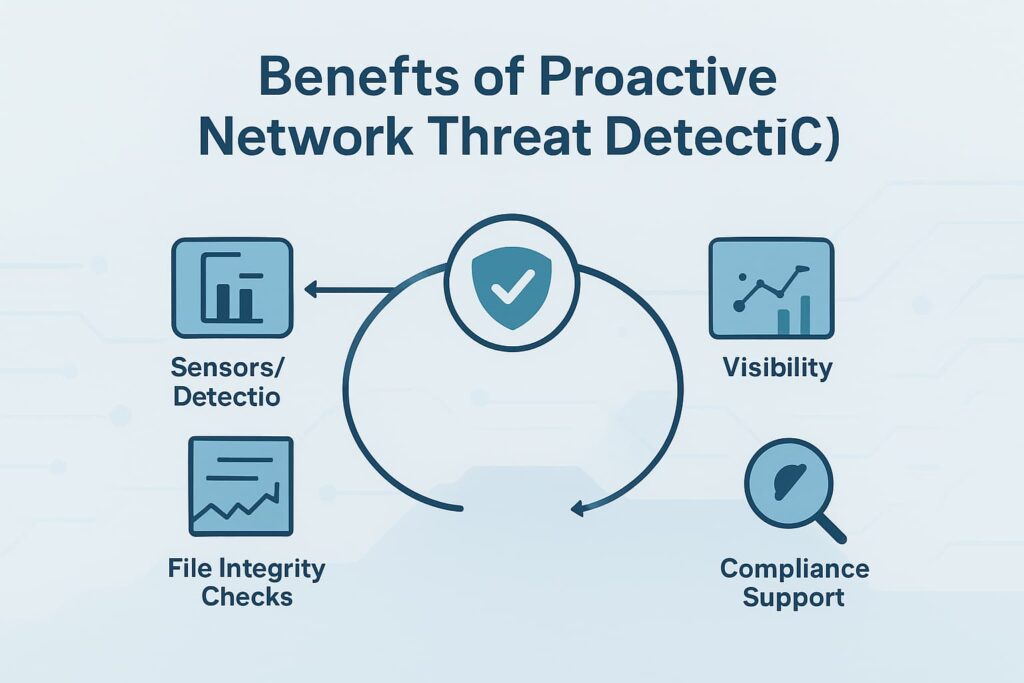Address
304 North Cardinal St.
Dorchester Center, MA 02124
Work Hours
Monday to Friday: 7AM - 7PM
Weekend: 10AM - 5PM
Address
304 North Cardinal St.
Dorchester Center, MA 02124
Work Hours
Monday to Friday: 7AM - 7PM
Weekend: 10AM - 5PM

Cyber attacks aren’t like the movies – there’s rarely dramatic countdown timers or flashing red screens. Instead, threats quietly probe networks, sometimes for months, looking for weak spots. Smart security teams don’t wait for the breach alert – they’re already hunting through logs, watching traffic, and spotting weird behavior that doesn’t quite fit.
Some organizations report reducing breach discovery times from months to days by shifting from reactive to proactive detection strategies..
Want to know what these threat hunters are actually looking for?
Every MSSP has been there – the 3 AM phone call about a ransomware outbreak that’s already encrypted half the client’s network. We’ve reviewed hundreds of post-mortems where the signs were there, buried in logs and alerts nobody had time to check. By the time teams start investigating, attackers have usually been poking around for weeks.
Security tools that just sit and wait for known bad stuff don’t cut it anymore. We regularly see crafty attackers who spend months learning a client’s network, moving so slowly and carefully that nothing trips the usual alarms. Some malware these days is smart enough to play dead during scans – pretty sneaky stuff.
In our audits of MSSP operations, we keep finding the same issues – teams drowning in alerts while the real threats sneak past their defenses. Those old-school tools that look for known attack patterns? They’re about as useful as a screen door on a submarine when facing hackers who customize their malware for each target.
Nearly every breach we investigate shows hints that were missed weeks or months before things went south.

After spending years in the trenches with MSSPs, we’ve learned that solid threat detection isn’t about waiting for alarms – it’s about actively hunting down weird stuff before it becomes a problem. Think of it like having security guards who don’t just watch cameras, but actually walk the halls looking for anything fishy.
Every week, we see MSSPs struggling with the same challenge: how to spot bad guys before they do real damage. Through our product audits and implementations, we’ve nailed down what actually works for proactive network threat detection:
The trick isn’t just buying fancy tools – it’s building a detection program that actually works for your team. Sometimes that old-school intrusion detection system catches things the shiny new AI misses. [1]
Credit: ClickHouse
To make this work, we focus on several core elements:
1. Network-Based Detection
This type focuses on monitoring network traffic for signs of malicious activity , such as unusual access attempts, data exfiltration, or suspicious communication patterns. Tools like Intrusion Detection Systems (IDS) and Network Behavior Analytics (NBA) help identify and respond to these threats early.
2. Endpoint-Based Detection Endpoints
Endpoint Detection and Response (EDR) tools monitor these devices for malware infections, unauthorized changes, or suspicious activity to stop attacks before they spread.
3. Application-Based Detection
Applications can contain hidden vulnerabilities that attackers exploit. By monitoring application-level activity through methods like security testing, code analysis, and runtime protection , combined with host-based intrusion detection tools , organizations can detect and prevent exploitation in real time.
Applications can contain hidden vulnerabilities that attackers exploit. By monitoring application-level activity through methods like security testing, code analysis, and runtime protection , combined with host-based intrusion detection tools , organizations can detect and prevent exploitation in real time.

Our threat hunting isn’t random , it’s methodical and hypothesis-driven.
A few technologies play vital roles:
We’ve discovered that blending these tools with AI and machine learning helps us filter out noise. This way, we can focus on what truly matters.

The math is pretty simple – when you catch bad guys early, they do less damage. Our MSSP partners who actively hunt threats usually spot problems 60-80% faster than those just waiting for alerts. Just last month, a team caught attackers poking around their client’s network during the first hour, not three weeks later like usual.
Smart attackers who try to play the long game? They hate this stuff. We’ve watched APT groups pack up and leave when they realize someone’s actually paying attention. These folks count on flying under the radar for months – active hunting ruins their whole plan.
But here’s the cool part – teams get scary good at this over time. Every hunt teaches them something new about their network. That weird traffic pattern that sent everyone scrambling last year? Now it’s just Bob’s backup server doing its thing. Our best partners spot most nasty stuff before their clients even know there’s a problem. [2]
That said, this approach isn’t without hurdles:
Despite these, building a proactive detection program is essential for modern cyber defense.
Proactive network threat detection means spotting cyber threats before they cause damage. It uses real-time monitoring, threat hunting, and machine learning security to look for suspicious activity. By finding signs of danger early, such as unusual network traffic or behavioral patterns, teams can stop attacks faster and keep network security strong.
Threat hunting uses cyber threat intelligence and anomaly detection to search for hidden dangers inside a system. Analysts look for threat indicators and use behavioral analysis to find malicious activity that automated tools might miss. This proactive security measure helps stop advanced persistent threats and improves cyber defense.
Common tools include intrusion detection systems, endpoint detection and response platforms, and SIEM integration. These tools collect logs, perform network traffic analysis, and use automated threat detection to spot anomalies. Together, they support continuous security monitoring and help with incident response and threat mitigation.
Machine learning security helps systems learn from data and recognize patterns linked to cyber threats. It improves anomaly scoring, reduces false alerts, and supports zero-day threat detection. With AI-powered threat detection, security teams gain better visibility and faster responses to cyberattack prevention needs.
From firsthand experience, effective threat detection comes from combining continuous monitoring, actionable intelligence, and skilled analysts. Machine learning helps reveal hidden attack patterns, while real-time threat intelligence keeps teams aware of new tactics. Together, these create a strong defense that finds threats before they strike.
Proactive network threat detection isn’t just about tools, it’s about mindset. By thinking like attackers, anticipating moves, and hunting with intent, organizations gain the advantage in an ever-changing cyber landscape.
Ready to strengthen your detection strategy? Join our expert consulting program to simplify operations, reduce tool overload, and improve visibility with vendor-neutral guidance backed by 15+ years of experience